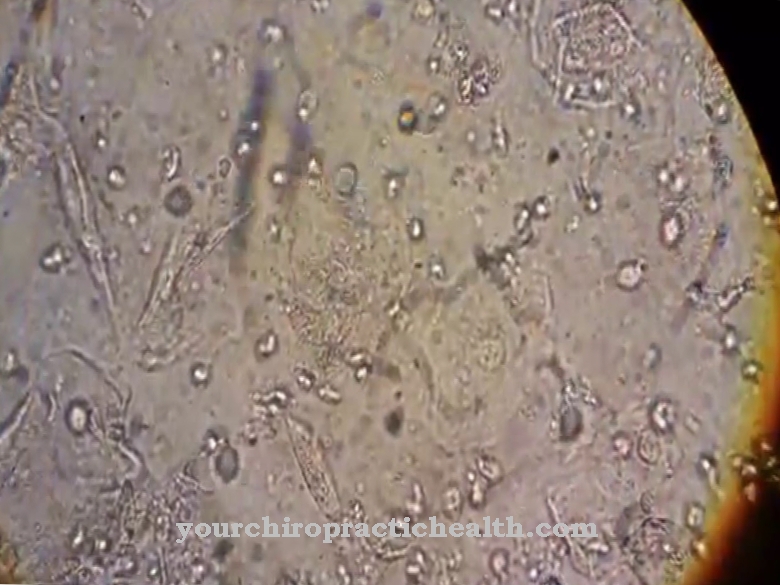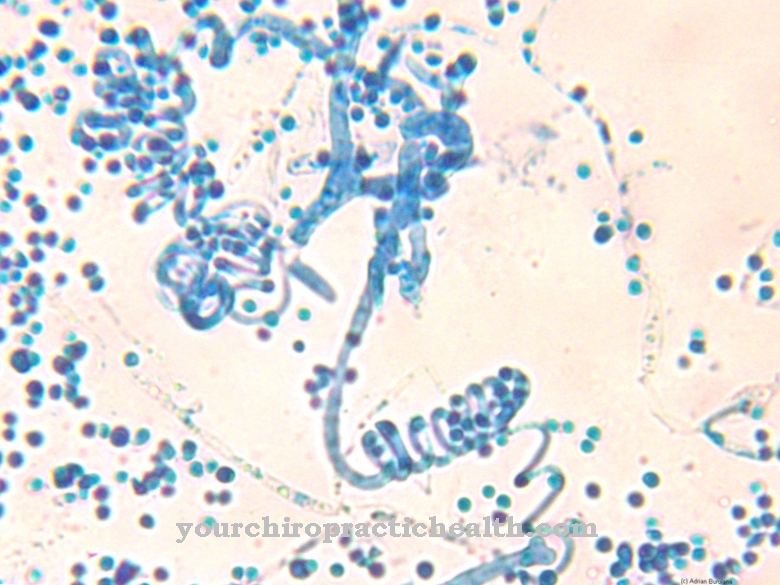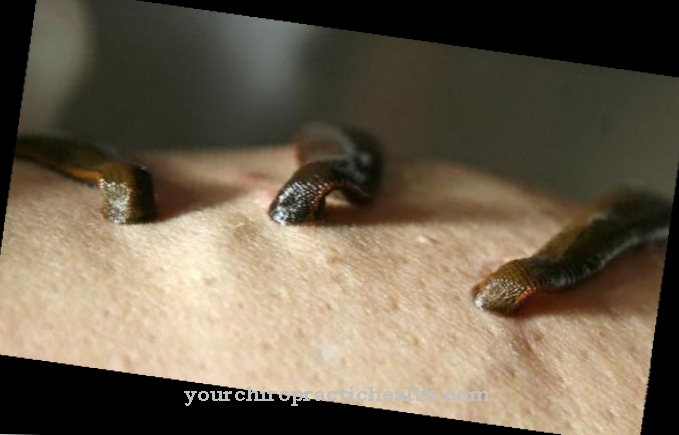Both Mites is a subclass of arachnids. Some species can cause disease in humans.
What are mites?
Under the term mites (Acari) a subclass of the arachnids (arachnida) is summarized. They belong to the arthropod tribe. The total of 546 mite families comprise around 50,000 known species. This makes the mites the most species-rich group among the arachnids. It is believed that there are still several unknown species.
The mites have six orders, which are summarized in two superorders. These are called Acariformes and Parasitiformes. The order Acariformes consists of the orders Trombidiformes and Sarcoptiformes, while the order Parasitiformes is divided into the orders Ticks (Ixodida), Opilioacarida, Holothyrida and Mesostigmata.
There are a number of different types of mites. The best known include the house dust mite, anthrax mite, cheese mite, hair follicle mite, spider mite, flour mite, water mite and grave mite.
Occurrence, Distribution & Properties
Mites occur in the most varied of habitats because they have a pronounced ecological potential. About half of the mite species settle in the ground. Up to 100,000 specimens of the arachnids can be found on suitable soils on every square meter.
Mites that settle in their bodies are important for humans. So serve u. a. the hair roots of the eyelashes as a habitat. They are also found in animals such as monkeys in their lungs or in birds in their nostrils. They can also be found in insects' tracheal exits.
There are both types of mites that feed on plants or fungi, as well as carnivorous species whose diet consists of dead tissue or carrion. A large number of mites lead a parasitic way of life.
The size of the arachnids varies between 0.1 millimeters and 3 centimeters. The largest species of mite are ticks, the females of which can grow up to 3 centimeters. Just like spiders, the mites have eight legs. In the larval stage, however, they only have six legs.
Mites don't move very quickly. For this reason, they use other animals such as insects as a means of locomotion, which means they can travel greater distances. Some species of mites also suck up the body fluids of the host concerned.
One of the strongest mites is the tropical horn mite, which reaches a body size of 0.8 millimeters. So she is able to lift 1200 times her own body weight. Numerous species of mites are blind, so they do not have the arachnids' central eyes. However, some species have one to five eyes and are endowed with a sense of sight that they use for hunting.
House dust mites are particularly well-known and of relevance to humans. The eight-legged members reach a size between 0.2 and 0.4 millimeters, which means that they cannot be seen with the naked eye. They prefer a humidity of 70 to 80 percent and temperatures between 15 and 32 degrees Celsius. Their lifespan is two to four months.
The house dust mites are a natural part of the ecosystem of human housing. In the apartment they prefer places where they can have food, warmth, moisture and darkness. Their diet consists of human dander. House dust mites find the best living conditions in human beds. There it can accumulate in the mattress, duvet and pillows. It penetrates through the house dust into the floors, carpets, armchairs and curtains.
The mites begin to multiply in spring, so that they reach their highest population in midsummer and autumn. When the heating season begins, most house dust mites die.
Illnesses & ailments
Some types of mites are harmful to human health. Doctors refer to diseases caused by mites as acariosis. The most common health problems include house dust allergies, which are caused by the excretions of house dust mites such as feces and protein particles. Without treatment, those affected are at risk of bronchial asthma over time.
Scabies is also one of the diseases caused by mites. An allergic reaction occurs on the human skin, which is caused by the excretions of the parasites. The term scabies goes back to “having to scratch”. The reason for this is the almost unbearable itching that the patients suffer from the parasites. Symptoms of scabies usually show up 2 to 5 weeks after the first infection. If another infection occurs, the symptoms set in after a few days.
Scabies is particularly common in developing countries, where up to 30 percent of the population suffer from it. In Central European countries, scabies are rarely recorded and are mainly found in community facilities such as day-care centers or old people's homes. The disease is caused by the type of mite Sarcoptes scabiei variatio hominis, which reaches a size of 0.3 to 0.5 millimeters.
Harvest scabies are a special form of scabies. It is caused by the harvest mite, also called autumn mite, which belongs to the family of running mites. In addition to humans, it can also affect dogs, cats and mice. Those affected suffer from reddened skin and itchy wheals that resemble mosquito bites. After 10 to 14 days, however, the symptoms subside.
















.jpg)



.jpg)

.jpg)




